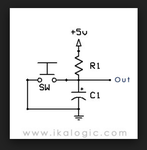Bjtpower
Full Member level 5
Hi All
I am looking to gain knowledge on Micro controller Hardware Design.
For that, i need to know about Pull up and Pull down Concepts.
I have controller of Pic Controller over where i am using 50 Pins.
now the rest pin Floating.
i want to fix them with the Pull Up or Pull Down Resistor.
I dont know what is the Purpose and how we can do the same that Particular pin should be PulLED UP OR Pulled Down..??
Looking for gaining some Knowledge..
Thanks
Marx
I am looking to gain knowledge on Micro controller Hardware Design.
For that, i need to know about Pull up and Pull down Concepts.
I have controller of Pic Controller over where i am using 50 Pins.
now the rest pin Floating.
i want to fix them with the Pull Up or Pull Down Resistor.
I dont know what is the Purpose and how we can do the same that Particular pin should be PulLED UP OR Pulled Down..??
Looking for gaining some Knowledge..
Thanks
Marx
